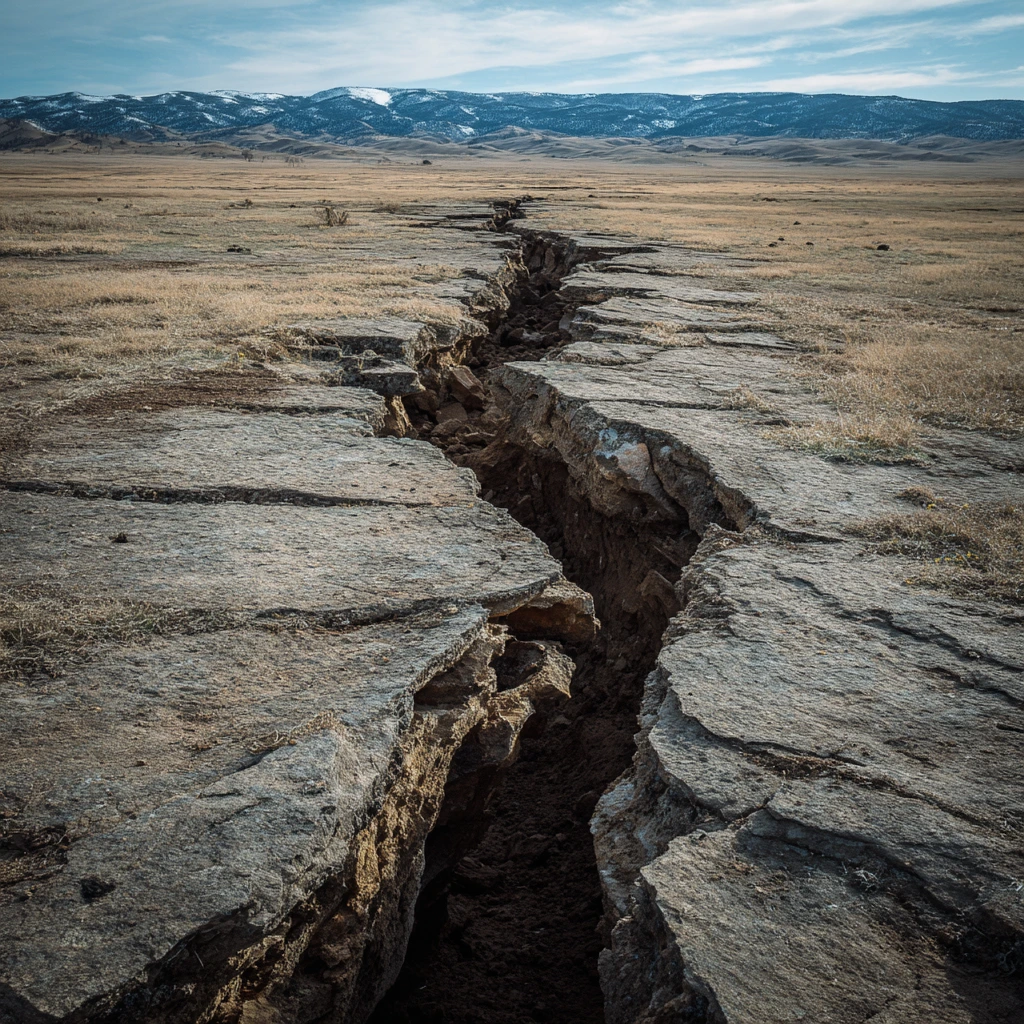For many years, the Tintina Fault—stretching over 1,000 kilometers across Canada’s Yukon Territory into Alaska—was considered a dormant geological feature. Geologists believed that the fault, which has been relatively quiet for millions of years, posed little to no seismic risk. However, recent research has dramatically changed this understanding. New evidence suggests that the Tintina Fault could be much more active than previously thought, with the potential to trigger a major earthquake in the near future.
This realization has come from cutting-edge research, including advanced topographic data gathered from satellites, drones, and aircraft. These findings not only challenge long-held assumptions about the fault’s activity but also raise serious concerns about the region’s preparedness for a large-scale seismic event. Given the growing strain along the fault line, it’s crucial to examine the Tintina Fault’s potential for future seismic activity and the implications it holds for local communities.

What Is the Tintina Fault?
The Tintina Fault is a major strike-slip fault that spans across the northern part of North America, running from the Yukon Territory in Canada to Alaska. A strike-slip fault occurs when two blocks of the Earth’s crust slide past each other horizontally. In the case of the Tintina Fault, this lateral movement has accumulated over millions of years, shifting the land by as much as 450 kilometers.
This fault system has long been a subject of study for geologists due to its massive size and potential seismic impact. Historically, the Tintina Fault was believed to be dormant, with little indication of significant earthquake activity in recent history. This lack of recent seismic events led many scientists to assume that the fault had entered a period of inactivity.
However, the more recent research conducted on the fault has started to change that perception. Through the use of advanced technologies, scientists have been able to detect new evidence that suggests the fault has experienced significant activity in the recent geological past, indicating that it may not be as inactive as once thought.

New Findings: Evidence of Past Seismic Activity
Recent research utilizing high-resolution topographic imaging has uncovered new and surprising findings about the Tintina Fault’s history. The study revealed that a 130-kilometer segment of the fault near Dawson City in the Yukon shows clear evidence of past seismic events, with large earthquakes occurring over the past 2.6 million years.
The fault’s movements are clearly visible in the landscape, with displaced landforms and features that suggest large-scale geological events. One key finding was the identification of glacial landforms that had been offset by up to 1,000 meters, indicating the occurrence of significant earthquakes during the Quaternary Period.
These discoveries challenge the previously held belief that the Tintina Fault had been largely inactive for millions of years. Instead, this new evidence paints a picture of a fault that has undergone multiple large seismic events in the relatively recent geological past. This raises the question of whether the fault is continuing to accumulate stress that could eventually lead to another major earthquake in the future.
Potential for Future Earthquakes
One of the most concerning aspects of the new research is the ongoing accumulation of strain along the Tintina Fault. The study indicates that the fault continues to accumulate stress at a rate of 0.2 to 0.8 millimeters per year. While this might seem like a small amount of movement, over thousands of years, such strain can build up significantly, creating the potential for a powerful earthquake.
Experts believe that, given the current rate of strain accumulation, the Tintina Fault could eventually release this energy in a major seismic event. Scientists suggest that such an earthquake could exceed a magnitude of 7.5, which would have devastating consequences for the region. A quake of this size could cause widespread damage to infrastructure, including roads, bridges, and buildings, as well as threaten the stability of vital systems such as the Trans-Alaska Pipeline.
The potential impact of a large earthquake on communities in the Yukon and Alaska cannot be overstated. Areas like Dawson City in the Yukon and Fairbanks in Alaska could experience significant damage to their infrastructure, and the regional economy could suffer as a result of disrupted transportation networks and vital resource pipelines.

Implications for Preparedness
The discovery of new seismic risks associated with the Tintina Fault has serious implications for earthquake preparedness in the region. Until now, the Tintina Fault had not been recognized as a major seismic source in Canada’s National Seismic Hazard Model. This oversight has left local governments and emergency planners with insufficient data to fully assess the potential risks.
As the new findings are incorporated into the seismic hazard model, there will likely be a reevaluation of preparedness strategies. Local authorities and emergency managers will need to consider the Tintina Fault’s potential for significant seismic events when developing future hazard assessments and emergency response plans. In particular, efforts to protect critical infrastructure, such as transportation networks and energy pipelines, will need to be prioritized.
In light of these discoveries, it is crucial that local governments take proactive steps to improve their earthquake preparedness. This includes not only updating seismic hazard models and risk assessments but also ensuring that buildings and infrastructure are designed to withstand large earthquakes. Public education campaigns about earthquake safety and preparedness will also play a vital role in minimizing the potential impact of a major seismic event.
The newfound activity of the Tintina Fault serves as a stark reminder that geological hazards are often more unpredictable than we might assume. What was once thought to be a dormant fault line is now recognized as a potential threat to both communities and infrastructure in the Yukon and Alaska. As strain continues to build along the fault, the possibility of a major earthquake remains a real concern.
This discovery underscores the importance of continually reassessing our understanding of geological risks. By using advanced technologies to gather new data and update seismic hazard models, we can ensure that communities in the region are better prepared for the future. Earthquake preparedness is not just about reacting to events when they occur; it’s about anticipating risks and taking proactive measures to protect lives and property.
As we move forward, the Tintina Fault serves as a reminder that we must always be vigilant about the forces beneath the Earth’s surface, no matter how quiet they may seem.
Table of Contents
Tintina Fault in the Yukon prone to large quakes, study reveals (msn.com)
Mindfulness and Mental Well-being Techniques: A Path to Inner Peace – trendsfocus